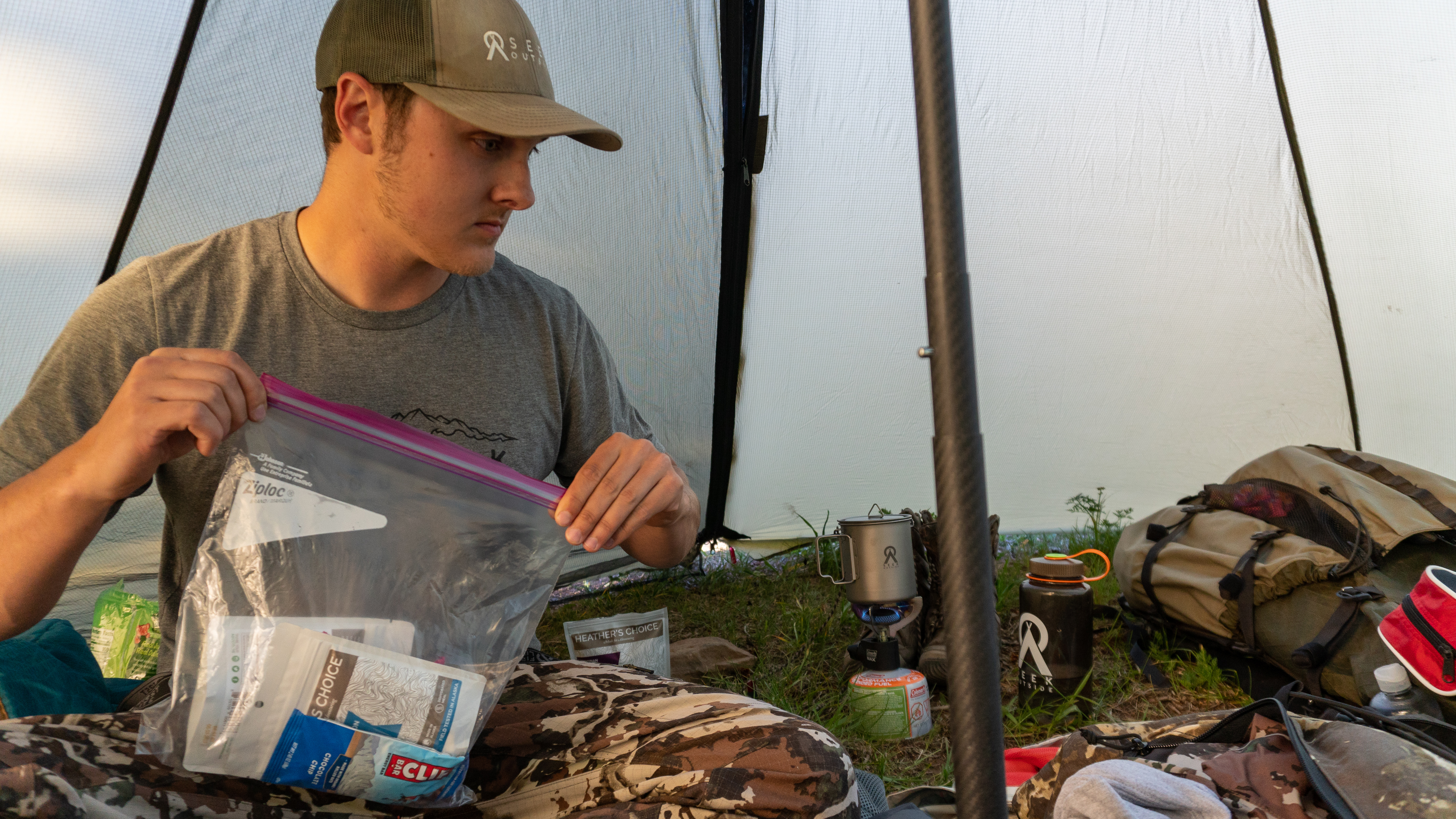Nutrition 101 for Backcountry Hunters
Posted by Heather's Choice on 13th Jul 2018
As if organizing your tags, scouting locations, preparing your gear, and physical conditioning wasn’t enough, meal planning for your backcountry hunts can add an additional layer of complication. You’re carefully counting every ounce of gear in your pack to ensure that you handle the packout once you’ve had a successful harvest. The weight of all of your water and food will quickly add up! Not to mention the difficulty of accommodating any potential food allergies or dietary restrictions in the backcountry. In this blog post, we’re going to explore ways to stay fueled and fit during all of your future backcounty hunting expeditions, including some basic nutrition considerations and meal planning strategies.
Estimating your caloric needs in the backcountry
How many calories is your body going to require on a daily basis in the backcountry? Start by logging your daily caloric in take at home using an app like MyFitnessPal or FitBit. Once you have determined your average daily caloric consumption, expect to nearly double number in the backcountry. (For example; I burn roughly 2,000 calories a day at home. Therefore, I plan to consume 3,500-4,000 calories a day in the backcountry.)

Micromanaging your macronutrients
For many backcountry hunters, meal planning ends when all of their calories are accounted for. Unfortunately, this strategy can leave your body deprived of essential macronutrients, like healthy fats and proteins, and leave you feeling fatigued and sluggish in the backcountry. Obviously, when you’re trying to packout 50+ pounds of fresh meat, lethargy is the last thing you want to experience!
What are macronutrients?
All of the food we consume gets broken down into three categories of macronutrients; carbohydrates, protein, and fat. Carbohydrates (including breads, fruits, vegetables, and sugars) are all broken down into glucose. Protein (such as meats, eggs, and dairy products) are broken down into amino acids. Fats are processed as triglycerides, and are a very energy dense form of calories. A healthy combination of all three macronutrient categories is required to maintain athletic performance and proper nutrition in the backcountry.
Carbohydrates
Do you ever feel like your belly is about to burst, but you’re still hungry? This is the result of eating too many carbohydrates, which get broken down into fast burning sugar (glucose) in our bodies. We can eat and eat carbohydrates, like potato chips and popcorn, and still feel hungry. That’s because our body is craving a healthy serving of satiating protein and fats.
Proteins
Protein is your best friend in the backcountry. When we consume protein, our bodies release a chemical called glucagon that tells us ‘we’re full’ and helps us feel satiated. Protein is also our primary source of essential amino acids, which help maintain and build muscle mass. If you feel like you’re ‘withering away’ on your multi-day backcountry expeditions, try increasing your protein intake. A good goal to shoot for is roughly 1 gram of protein for every pound of lean body mass. That means you’re going to want a lot of protein at breakfast, protein rich snacks, and lots of protein at dinner to help reduce the amount of muscle waste.
Healthy Fats
Fats have been given a really bad reputation, when in fact they are an important part of a balanced, nutritious diet. Our brains needs fatty acids to help build synaptic pathways and our bodies store fat as fuel to burn later down the trail. Consuming healthy fats, like coconut oil, butter, and ghee in the backcountry will help you stay energized, alert, AND best of all they’re delicious!
Going Grain-Free in the Backcountry
Gluten-free diets are all the rage these days, but why is going grain-free in the backcountry a good idea? Ingesting too many gluten containing grains can contribute to chronic inflammation and joint pain, in addition to general lethargy caused by excessive consumption of carbohydrates. If you’re waking up with sore knees or low back pain in the backcountry, it may be time to consider grain-free backpacking foods, like Heather’s Choice meals and snacks.
What are we eating in the backcountry?
We start eat morning with an instant coffee, supplements, and a hot Buckwheat Breakfast. Throughout the day we eat lots of healthy snacks like jerky, mixed nuts, dried fruit, hard cheeses, nut butters, and our favorite flavors of Packaroons. For dinner, we prefer Heather’s Choice just add water meals, like Sockeye Salmon Chowder and Dark Chocolate Chili. These meals make it easy to increase your calorie count and satiate your hiker hunger with plenty of protein and healthy fats.
Ready to start meal planning for your next backcountry adventure? Download your free backcountry meal planning worksheet here!
…